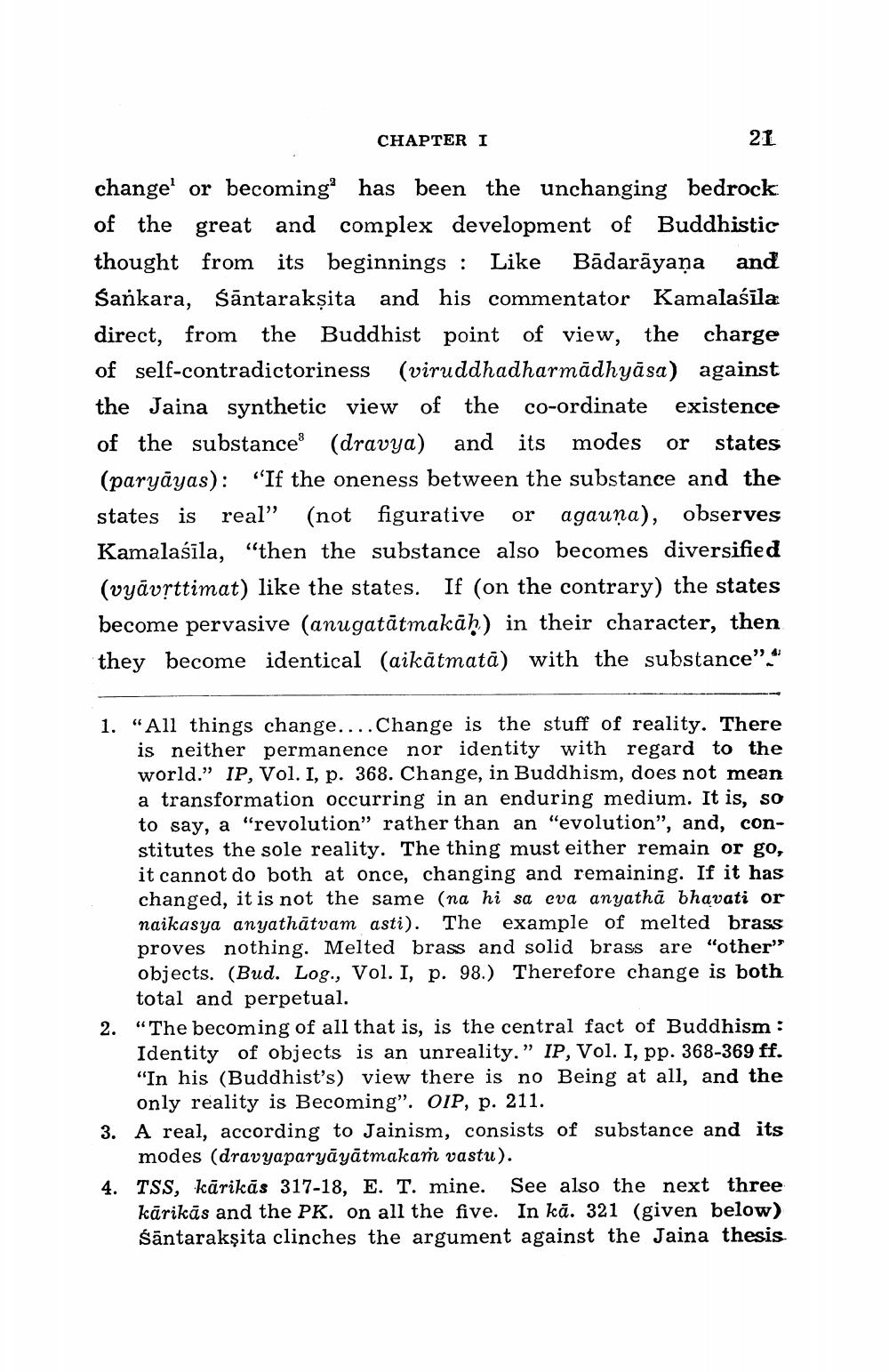________________
CHAPTER I
21 change or becoming has been the unchanging bedrock of the great and complex development of Buddhistic thought from its beginnings : Like Bādarāyaṇa and Sankara, śāntarakṣita and his commentator Kamalaśīla direct, from the Buddhist point of view, the charge of self-contradictoriness (viruddhadharmādhyāsa) against the Jaina synthetic view of the co-ordinate existence of the substance (dravya) and its modes or states (paryāyas): "If the oneness between the substance and the states is real” (not figurative or agauņa), observes Kamalaśila, “then the substance also becomes diversified (vyāvșttimat) like the states. If (on the contrary) the states become pervasive (anugatātmakāh) in their character, then they become identical (aikātmatā) with the substance"."
1. "All things change.... Change is the stuff of reality. There
is neither permanence nor identity with regard to the world.” IP, Vol. I, p. 368. Change, in Buddhism, does not mean a transformation occurring in an enduring medium. It is, so to say, a "revolution" rather than an "evolution", and, constitutes the sole reality. The thing must either remain or go, it cannot do both at once, changing and remaining. If it has changed, it is not the same (na hi sa cva anyathā bhavati or naikasya anyathātvam asti). The example of melted brass proves nothing. Melted brass and solid brass are "other" objects. (Bud. Log., Vol. I, p. 98.) Therefore change is both total and perpetual. “The becoming of all that is, is the central fact of Buddhism : Identity of objects is an unreality.” IP, Vol. I, pp. 368-369 ff. "In his (Buddhist's) view there is no Being at all, and the
only reality is Becoming". OIP, p. 211. 3. A real, according to Jainism, consists of substance and its
modes (dravyaparyāyātmakam vastu). TSS, kārikās 317-18, E. T. mine. See also the next three kārikās and the PK. on all the five. In kā. 321 (given below) śāntarakṣita clinches the argument against the Jaina thesis
2.




